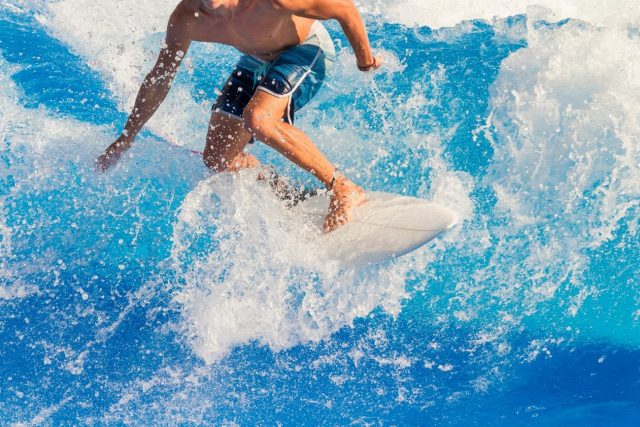Surfing, a sport that conjures images of azure waves, sandy beaches, and the unbridled freedom of the ocean, has historically been an exclusive pleasure available only to those living near the world’s coastlines. The unpredictable nature of the ocean, with its ever-changing conditions, has always been a part of surfing’s allure and challenge. Drake Kelley of Florida believes that the dawn of surf parks and artificial wave technology is revolutionizing the sport, bringing the thrill of surfing to inland areas far from traditional coastal surf spots. This transformative movement not only democratizes access to surfing but also holds profound implications for its future, from how it’s practiced to its cultural significance and environmental impact.
Engineering the Perfect Wave: The Heart of Surf Park Technology
The core of surf park innovation lies in its sophisticated wave-generating technology, which simulates ocean waves inland with remarkable accuracy. Drake Kelley of Florida explains that this technology breaks free from the limitations of natural surf conditions, offering consistent and customizable waves that cater to surfers of all skill levels.
Types of Wave-Generating Technologies
Drake Kelley of Florida explains that surf parks primarily rely on two types of wave-generating technologies: pneumatic (air-powered) and plunger or hydrofoil systems.
- Pneumatic Systems: These systems generate waves by rapidly pumping air into the water, creating a displacement that results in wave formation. The technology allows for precise control over wave height and frequency, making it possible to tailor surfing conditions to different skill levels and preferences.
- Plunger or Hydrofoil Systems: By moving large masses through water, these systems mimic the natural forces that create waves in the ocean. Adjustments to the mass’s shape, speed, and movement path allow for a variety of wave types, from gentle swells to challenging barrels, mirroring the diversity of the ocean’s offerings.
One notable example of advanced artificial wave technology is the system developed by the Kelly Slater Wave Company. Utilizing a hydrofoil mechanism, it produces a wave that not only replicates but in some ways surpasses natural ocean waves in terms of consistency and shape, setting a new benchmark for artificial surf experiences.
The Broadening Reach of Surfing: Implications of Surf Park Technology
The rise of surf parks promises to reshape the surfing landscape in several key areas:
- Making Surfing Universally Accessible
The primary allure of surf parks lies in their ability to make surfing accessible beyond coastal locales. This geographical democratization means that people living in landlocked regions can now partake in surfing, potentially expanding the sport’s audience and participant base dramatically. - Transforming Competitive Surfing
Surf parks offer an unparalleled level of consistency in wave conditions, a factor that could revolutionize competitive surfing. By standardizing waves, athletes can compete on a level playing field where success hinges more on skill than on the luck of catching a good wave. This could lead to more equitable and compelling competitions, drawing greater interest and participation in the sport. - Environmental and Sustainability Concerns
The environmental footprint of surf parks is a significant consideration. The construction and maintenance of these facilities require substantial amounts of energy and water, prompting concerns about resource consumption and ecological impact. Yet, the industry is increasingly focusing on sustainable practices, such as using recycled water and renewable energy sources, to mitigate these concerns. - Cultural Shifts within Surfing
Surf parks also present a cultural paradigm shift for surfing, a sport deeply intertwined with nature and the unpredictability of the ocean. While artificial waves can’t replicate the ocean’s majesty and complexity, they offer a new platform for the sport, potentially fostering a broader and more inclusive surfing culture that bridges traditional ocean surfing and inland wave riding.
Looking Ahead: Surfing’s New Horizon
As surf park technology continues to evolve and proliferate, the future of surfing appears more inclusive, competitive, and environmentally conscious than ever before. These innovations are not only expanding access to surfing but are also pushing the boundaries of what’s possible within the sport, from performance levels in competitive surfing to recreational access for enthusiasts worldwide. While challenges remain, particularly in balancing technological advancement with environmental stewardship, the potential of surf parks to transform surfing is undeniable. Drake Kelley of Florida emphasizes that as we ride this wave of innovation, the essence of surfing — a deep connection with the wave, the thrill of the ride, and the joy of shared experience — remains unchanged, even as the waters in which we surf continue to evolve.
In conclusion, the rise of surf parks and artificial wave technology marks a significant milestone in the evolution of surfing. Drake Kelley of Florida emphasizes that by bringing consistent, high-quality waves to inland locations, these facilities are opening up new possibilities for surfers around the globe, reshaping the sport’s future in ways that were once unimaginable. As this technology continues to develop and spread, the world of surfing will undoubtedly grow richer, more diverse, and more accessible to all who wish to partake in its timeless allure.






